On January 12, 2025, Trinity United Methodist Church celebrated its 200th Anniversary.
Trinity has a long and distinguished heritage of faithful ministry in downtown Tallahassee, Florida. What began as a missionary outpost in the new town of Tallahassee in 1824 is now a vibrant congregation that worships together, shares life in faith, and serves our community and beyond.
Circuit-riding Methodist missionaries rode on horseback from South Carolina through the swamps and backwoods of Georgia to arrive in the Big Bend area of the Territory of Florida soon after the first settlers came in the early 1820s.
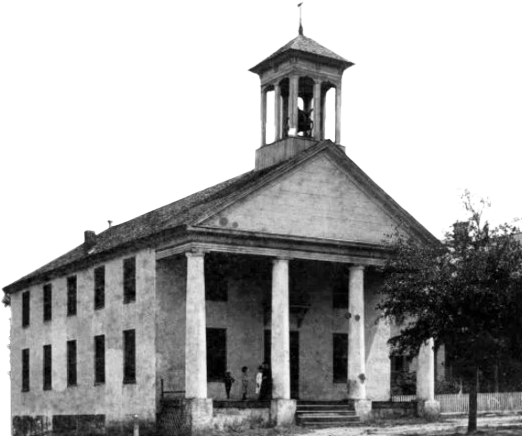
Built in 1840, this white stucco building replaced the plain wooden structure of 1825. The bell was added in 1875.
The circuit riders had been sent by the South Carolina Conference of the Methodist Episcopal Church’s Board of Missions to meet the spiritual needs of the wagonloads of men, women, and children who came to the Tallahassee settlement, seeking a land of new opportunities. In 1824, the mission became what is now called Trinity United Methodist Church. The congregation first met in a small wooden building on what is today the corner of West Park Avenue and Bronough Street, and in 1840, built a larger sanctuary on the present location of Park Avenue and Duval Street.
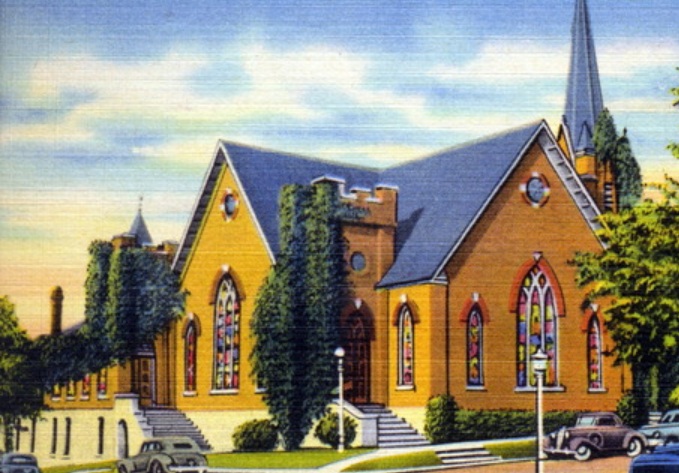
In 1893, a red brick semi-gothic sanctuary replaced the original sanctuary in which the Methodists had worshiped since 1840. It served the congregation until 1962 and was replaced by the current church complex in 1964.

Trinity’s present place of worship, the third on the corner of Park Avenue and Duval Street, was completed in May 1964. The church includes a sanctuary, chapel, fellowship hall, classrooms, parlor, library, and offices. Its magnificent steeple holds high the cross and beckons all to come worship and serve God the Father, the Son, and the Holy Spirit.
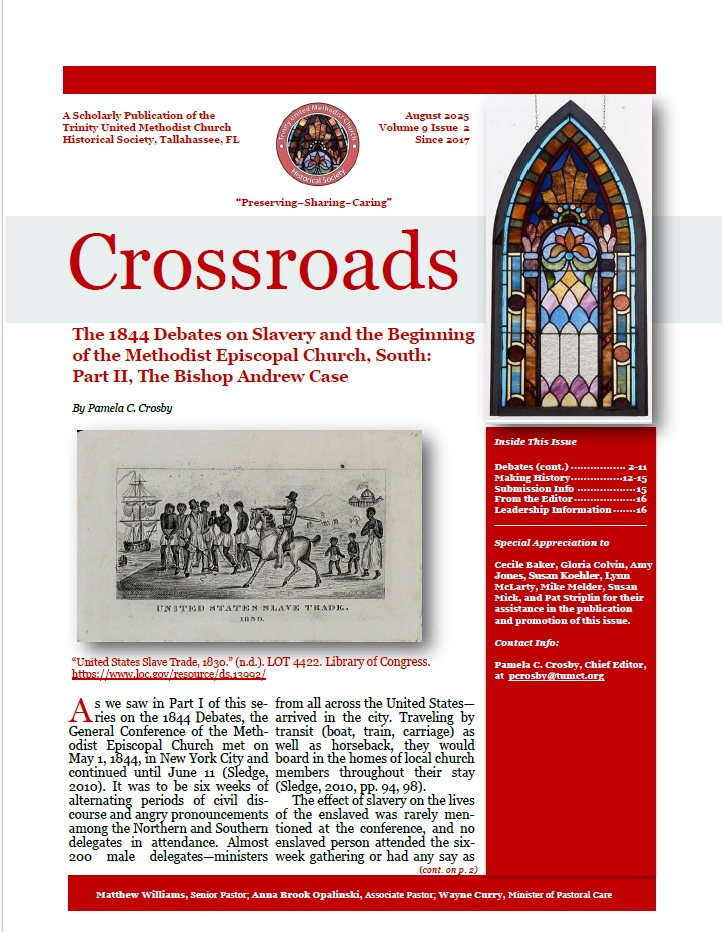
Crossroads, published by the Trinity UMC Historical Society, features original historical research, based on document and record searches, interviews, and on-site visits. The current issue highlights the 1844 Debates in New York City over slavery, which led to the breaking up of the Methodist Episcopal Church.
In a special ceremony of prayers, hymns, reflections, historical narratives, and communion, Trinity members acknowledged the church’s past failures by addressing its relationship to those enslaved and others who had been denied basic human rights throughout its history.
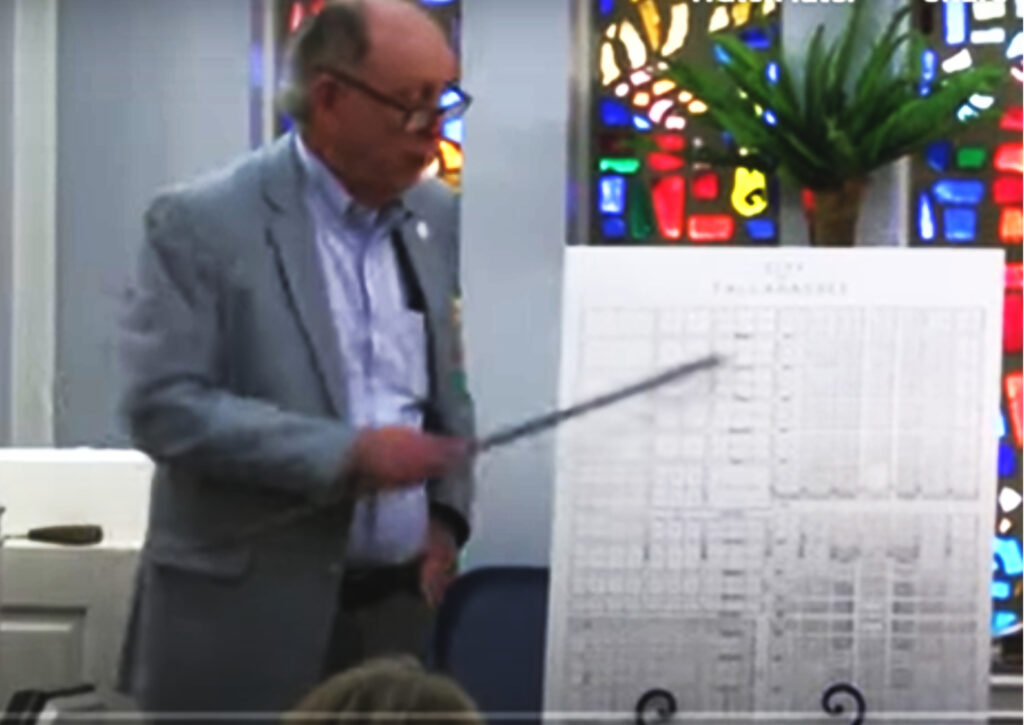
The Historical Society is responsible for showing and telling the history of Trinity through the publication of its research periodical, Crossroads, displays of documents and artifacts, and sponsorship of presentations and meetings.
The Historical Society is open to anyone who is interested in or wishes to be involved with church history.
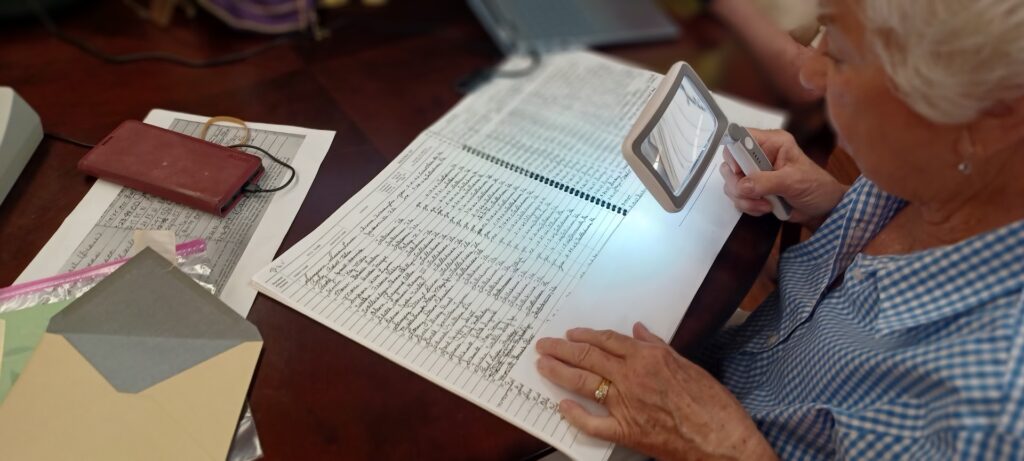
The CPCH is a ministry of the Church Council with members appointed by the Council and with other individuals who serve as associate members. The CPCH is responsible for researching and preserving the many documents, journals, reports, photographs, recordings, and other material relevant to our church history.

Cecile Baker, HS and CPCH chair at [email protected]
Dr. Pamela Crosby, publications editor, at [email protected]